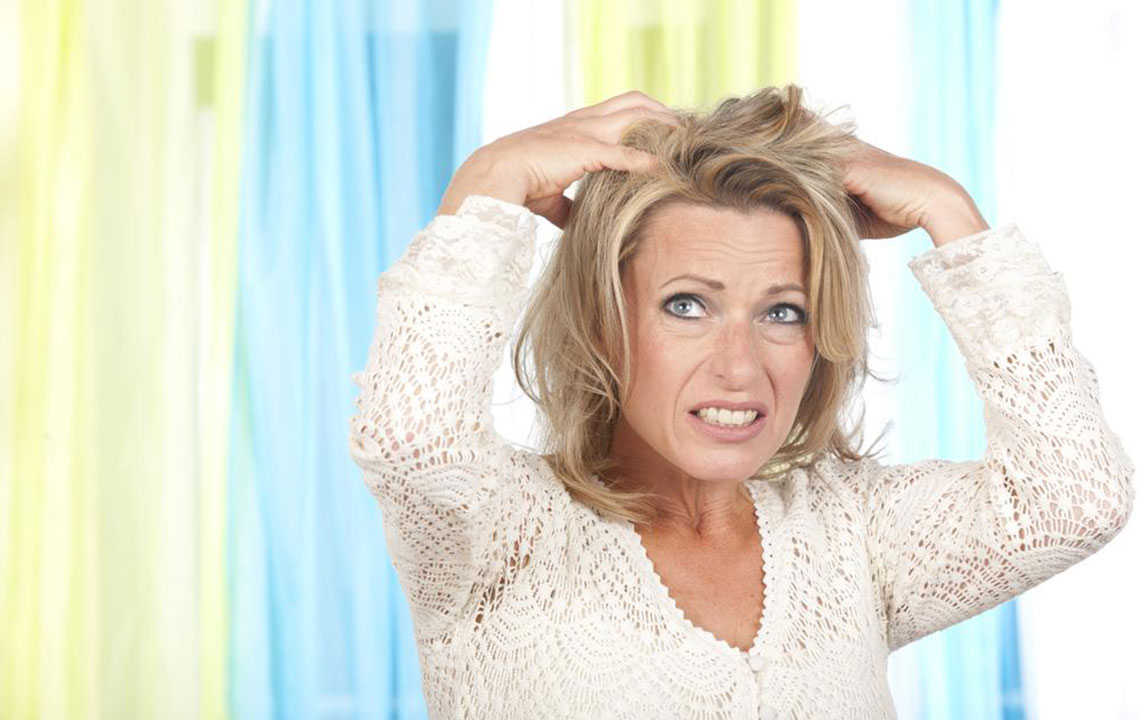6 Simple Home Remedies for a Dry Scalp

There are different types of beauty woes that you have to deal with. Dry scalp is one of the most awkward problems. The itching sensation can become irritating. The most prominent reason for this condition is the after-effect of underactive or dormant oil glands in the scalp, and as a result, the needed amount of oil is not produced in the skin. Some of the common causes of this problem are a fungal infection, overuse of hair styling products, extended exposure to hard water, prolonged use of harsh shampoos, improper diet, exposure to extreme weather conditions and so on. Read on to find best dry scalp treatments through natural remedies.
Apple cider vinegar (ACV)
Apple cider vinegar is a high-quality astringent, and it helps you get rid of dangerous microbes from the scalp. ACV also balances the pH levels in your body to restore the steady functioning of the oil glands. ACV is used in many dry scalp treatments. You must use a cotton ball for applying the apple cider vinegar on your scalp and fingers should be used to massage for 2 to 3 minutes. You have to leave it on the scalp for 10 minutes, and then, it should be rinsed off using cool water.
Lemon juice
Lemon juice is one of the best dry scalp treatments. The astringent properties of lemon are a proven fact, and lemon juice controls the pH levels to solve dandruff related fungal infection. You have to take a half portion of a lemon, and it should be rubbed on the scalp by applying some pressure. Leave the lemon juice on the scalp for five minutes before rinsing off, and a conditioner can be applied after washing the hair.
Onion juice
Onion is a rich source of sulfur and the scalp dryness caused by dandruff can be eliminated with onion juice. If you use it, you do not have to worry about flaky scalp. Onion juice also stimulates hair growth effectively. Onion should be grated to extract the juice, and you have to add a little honey to this juice. It can be applied on the scalp with the help of cotton, and you must leave it in the scalp for 15 to 30 minutes. Shampoo can be used to wash off the mixture. The best frequency of applying this juice is twice a week and as the condition improves; you can change the frequency to once in 15 days.
Apple juice
The presence of mild acids in the apple juice gets engaged in the process of exfoliating the scalp for eliminating the flaky, dry and dead skin. The pH balance can be restored to improve the oil production with the help of apple juice. You have to extract the juice from 1 or 2 apples, and your hair should be rinsed with it. Keep it there for 10 minutes before washing off using plain water. For getting the best results, you can repeat this process two times a week.
Aloe vera juice
Aloe vera is an excellent option for a dry and itchy scalp. It contains a lot of vitamins, amino acids, fatty acids and sugar to nourish the scalp skin and the antimicrobial and anti-inflammatory properties of aloe vera eliminate all types of infections and impurities. If you can include aloe vera in your weekly hair care routine, developing beautiful hair and healthy scalp becomes an uncomplicated process. Fresh aloe vera gel must be extracted from aloe leaves ad you must mix it with water to get a consistency similar to juice. This juice needs to be applied to the hair and scalp, and for a few minutes, you must massage the hair and scalp. Wash the hair After 20 minutes.
Mixture egg yolk and olive oil
If you are looking for dry scalp treatments, egg yolk is a perfect option because it contains lecithin sterols and vitamin A. These ingredients smooth the skin and get rid of all types of infections. Olive oil is a rich source of antioxidants and fatty acids, and skin nourishment becomes a reality with olive oil. You would have to combine one egg yolk with three tablespoons of olive oil and one teaspoon lemon juice can be added as well. This hair mask should be kept on the scalp for 30 minutes, and lukewarm water can be used to wash away the mask.
If you cannot find convincing results from these home remedies, you must consult with a dermatologist. The reason for your dry scalp can be the effect of medical conditions like seborrheic dermatitis, and they can lead to dandruff. The doctor will prescribe the right medications, ointments, and creams for dry scalp treatment. The most important thing is that you must make sincere efforts to keep your skin, scalp, and hair healthy and if you experience dry scalp, the best dry scalp treatments must be chosen to address the issue as early as possible.


